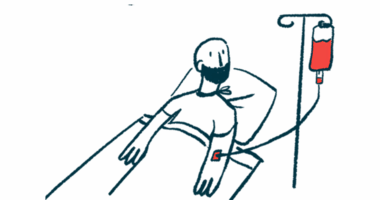Bypassing Agents Used for Hemophilia A May Also Benefit Children with Hemophilia B, Case Series Reports

Single or combination therapy with bypassing agents used for hemophilia A patients with inhibitors can be suitable treatment options for children with hemophilia B with factor IX inhibitors as well, a case series suggests.
The report, “Alternative treatment options for pediatric hemophilia B patients with high‐responding inhibitors: A thrombin generation‐guided study,” was published in the journal Pediatric Blood & Cancer.
Hemophilia B is a genetic, bleeding disorder characterized by a missing or deficient clotting factor IX, which causes a slowdown of the blood clotting process. The disease is mostly caused by mutations in the F9 gene, which can be inherited from one or both parents or can also spontaneously appear in an individual.
Although research is underway to develop gene therapies with the potential to cure the disease, the current standard of care continues to be replacement therapy, in which patients are treated with human or recombinant (lab-made) factor IX.
Replacement therapies are used either as a preventive measure or for stopping ongoing bleeding episodes.
However, this approach is ineffective in some patients who end up developing antibodies, called inhibitors, that block the activity of factor IX.
This complicates the treatment of the 30% of patients with severe hemophilia A (HA) affected by these inhibitors and, although much more rarely, 1.5%-3% of hemophilia B (HB) patients.
“The choice of a suitable therapy may be complicated, because there are only a few small-scale reports that provide potential guidance for the care of FIX inhibitor patients,” the researchers emphasized.
They also noted that “the guidelines for optimal care of HA inhibitor patients do not necessarily apply to FIX inhibitor patients.”
In their study, the team of researchers from Tel Aviv University and The Israeli National Hemophilia Center and Thrombosis Unit report on a nine-year follow-up study on two children and one adolescent with hemophilia B and inhibitors.
The patients, all three of whom were diagnosed with hemophilia B during childhood, were 2.5, 13.5, and 18 years old at the time of the first combination treatment.
Their high risk for developing an allergy to factor IX (severe F9 gene defects and severe bleedings) prompted researchers to test alternative treatments, namely those also used in patients with hemophilia A with inhibitors: recombinant activated factor VII (rFVIIa, brand name NovoSeven) and factor VIII inhibitor bypassing activity (FEIBA, brand name also FEIBA, also known as anti-inhibitor coagulant complex.
These factors are collectively called bypassing agents, because rather than replacing the missing factor, they bypass the factors blocked by the patient’s antibodies to help form a normal clot.
First, researchers compared the effects of these treatments with factor IX therapy in plasma samples of the patients assayed in the lab. As a readout for treatment efficacy, they measured how quickly thrombin was formed, an essential component of the blood clotting process, downstream of factor IX.
The tests demonstrated that increasing concentrations of rFVIIa or FEIBA directly correlated with a quicker and higher thrombin formation and that a combination of a low dose of rFVIIa plus FEIBA yielded responses that were as good as high doses of each agent alone.
Given the results, a low concentration of rFVIIa plus FEIBA was given to the 18-year-old patient, who underwent a circumcision surgery.
The combo was given every six hours on the day of surgery, then reduced to two and three times daily, and discontinued on the fifth day after the surgery with no bleeding complications. Plasma analysis revealed that, 20 minutes after receiving the therapy, thrombin levels had raised dramatically in his blood.
Given the positive results with this patient, doctors started to treat the 13.5-year-old for bleeding episodes with a similar combo treatment of rFVIIa plus FEIBA (doses adjusted for each patient). The child also underwent surgeries, with the same treatment, without complications.
The youngest of the three patients (age 2.5) had already developed anaphylactic shock, an extreme allergic reaction, to factor IX in infancy, and responded well to rFVIIa treatment alone. The combo therapy could not be used because of the prior history of anaphylactic shock.
During the nine-year follow-up, there were no severe adverse events or any thrombosis, which is the formation of a clot inside a blood vessel that blocks blood flow, demonstrating that repeated treatment with bypassing agents can be a safe, suitable option for hemophilia B patients with inhibitors.
“Combined BPA [bypassing agents] therapy, which had previously been applied only for HA patients with inhibitors may become an additional option for the treatment of some HB patients with inhibitors,” the researchers concluded.






